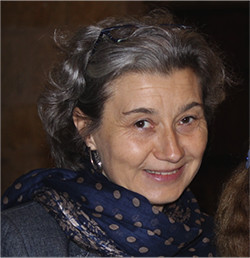Sophie Pennec
speaks about the research project on the orphans in France

Sophie Pennec is a demographer at INED. She co-directed the survey on end-of-life in France (2010) and is now conducting a research project on orphans.
(Interview conducted in April 2015)
Why launch a research project on orphans in France?
Most of us do not lose our parents before we become adults. In developed countries, parents die increasingly late: with longer life expectancy, people are often close to retirement age before their parents die. It is increasingly rare to lose one’s father or mother during childhood or adolescence.
Young orphans, then, constitute a small population in France, one that tends not to appear distinctly in the statistics. For example, in research on families, single-parent households that have become so due to the death of the other parent are put in the same category as families that are single-parented due to parents’ separation. And yet we can reasonably assume that what orphans experience is quite different from what children of divorced or separated parents may experience.
With this socio-demographic research project, conducted in partnership with the corporate foundation OCIRP-Au cœur de la famille [Organisme Commun des Institutions de Rente et de Prévoyance—At the heart of the family], we hope to help end the invisibility of this group, who are not included in statistics and often not taken into account in public policymaking. Their situation is undoubtedly quite specific, perhaps especially given how seldom it occurs and how little is known about it.
What are the main questions you will be investigating in this project?
Together with Cécile Flammant, who is writing a doctoral thesis on the subject, Laurent Toulemon and I will first attempt to determine how many child and young adult orphans live in France today and how many families are concerned.
In the most recent demographic studies on the subject, conducted by Alain Monnier and myself, we estimated the number of orphans under age 21 living in France in 1999 at 500,000. Most had lost their father. Only one in twenty had lost both parents. It is important to recall that in France a person is considered an orphan even if they have lost only one parent (“orphelin simple”); those who have lost both parents are “orphelins doubles.”
To learn more about them, we will work to specify their socio-demographic characteristics and living conditions: where they live, what social milieus they belong to, what types of families (blended, single-parent) they live in, whether they have half-siblings, and other questions. We will analyse the risk of becoming an orphan, widow or widower by social milieu and how that risk has evolved over time. We will also take into account the case of parents who are not married.
Lastly, we will be considering the effects that parent’s or parents’ premature death may or may not have had on orphans’ trajectories, particularly during their entry into adulthood. We will be interested in whether they took up different educational paths or left the family home earlier or later than others, at what age they began to cohabit, etc.
How will you organize your work?
The project will last four years, during which we will be using a wide spectrum of data, including administrative data, insurance company and/or social security system management data, statistical survey data (e.g., from the French National Institute of Statistics and Economic Studies [INSEE], which has now added survey questions on whether parents are still living). One of the difficulties is that—fortunately!—this population is quite small, meaning that samples of it in surveys are likewise small. By bringing together a large set of surveys, we hope to have more robust data to work from.
We will also be conducting simulations based on fertility and mortality rates for the different socio-occupational categories. This will work to validate our survey-based estimates of orphan numbers and enable us to break down changes in orphanhood over the last decades into what is due to rising life expectancy, what to later childbearing age, what to social differentials and changes in those differentials.
